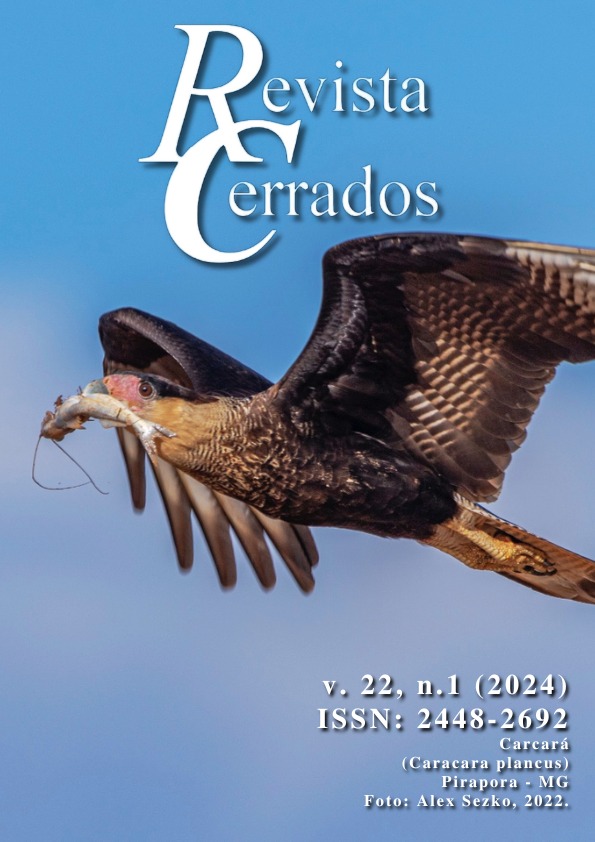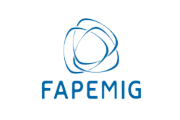The scientific, didactic and tourist potential of the Botumirim State Park, Minas Gerais
DOI:
10.46551/rc24482692202410Keywords:
Botumirim, Conservation Units, Geodiversity, Geotourism, Serra do EspinhaçoAbstract
Protected areas are tourist and educational destinations for visitors from different parts of the country and the world, who find nature their main motivation. The general objective of this research is to analyze the scientific, didactic and tourist potential of the Botumirim State Park conservation unit. To this end, bibliographical research was used, maps were created using the ArcGis 10.3 software and the geodiversity of the park was evaluated in a qualitative and quantitative way, based on scientific, didactic and tourist values, in addition to its risk of degradation. Despite the difference in scores, the evaluation proved the didactic and tourist relevance of geosites and geodiversity sites. The attractions evaluated were classified as having local, national and international relevance according to the established criteria, with values between 280 and 380 points in didactic potential and between 175 and 325 in tourist potential. In terms of scientific value, good results were also found, with a variation between 170 and 355 points. The attractions of geological/ geomorphological interest researched can be worked on in Basic Education in an integrated way, adopting a holistic view of nature.
Downloads
References
AGUIAR, P. R. O Potencial Científico, Didático e Turístico das Unidades de Conservação da Serra do Espinhaço Norte Mineiro. 2023. 253 f. Tese (Doutorado em Geografia – Tratamento da Informação Espacial) – Pontifícia Universidade Católica de Minas Gerais, Belo Horizonte, 2023.
BAETA, A.; PILÓ, H. Patrimônio arqueológico nos campos e nos suportes ferruginosos. In: Ruchkys (Org.). Patrimônio espeleológico em rochas ferruginosas. Campinas: Sociedade Brasileira de Espeleologia, 2015. p. 210-237.
BRILHA, J. B. R. Inventory and Quantitative Assessment of Geosites and Geodiversity Sites: a Review. Geoheritage, [S./l.], v. 8, n. 2, p. 119-134. 2016. Disponível em: http://www.cprm.gov.br/geossit/app/webroot/files/Brilha_2016_Geoheritage.pdf. Acesso em: 2 abr. 2020.
BRILHA, J. B. R. Patrimônio geológico e geoconservação: a conservação da natureza na sua vertente geológica. Braga: Palimage, 2005.
CAZAROTTO, C.; DOYAMA, S. Guia Digital Interativo Botumirim. 2020. Disponível em: https://drive.google.com/file/d/1hAugq4ipqsQRL0O4TsVUD0uZGv2VYREW/view Acesso em: 3 jun. 2021.
CRUZ, R. de C. A. da. Introdução à geografia do turismo. 2. ed. São Paulo: Roca, 2003.
DRUMMOND, G. M.; MARTINS, C. S.; MACHADO, A. B. M.; SEBAIO, F. A. & ANTONINI, Y. (Org.). Biodiversidade em Minas Gerais: um Atlas para sua conservação. 2. ed. Belo Horizonte: Fundação Biodiversitas, 2005. 222 p.
FIGUEIRÓ, A. S; VIEIRA, A. A. B.; CUNHA, L. Patrimônio Geomorfológico e Paisagem como Base Para o Geoturismo e o Desenvolvimento Local Sustentável. CLIMEP – Climatologia e Estudos da Paisagem, Rio Claro (SP), v. 8, n. 1, p. 49-81, janeiro/junho/2013. Disponível em: http://www.periodicos.rc.biblioteca.unesp.br/index.php/climatologia/index. Acesso em: 5 maio 2020.
INSTITUTO ESTADUAL DE FLORESTAS. Estudo de técnico para a criação do Parque Estadual de Botumirim. Montes Claros: IEF, 2018.
LOPES, L. S. de O. Estudo metodológico de avaliação do patrimônio geomorfológico: aplicação no litoral do estado do Piauí. 2017. 215 f. Tese (Doutorado em Geografia) – Universidade Federal de Pernambuco, CFCH, Recife, 2017.
PRIETO, J. L. P.; CORTEZ, J. L. S.; SCHILLING, M. E. Patrimonio geológico y su conservación en América Latina: Situación y perspectivas nacionales. México: UNAM; Instituto de Geografía, 2016.
MEIRA, S. A. Subsídios ao Planejamento e Propostas de Promoção do Geopatrimônio do Parque Nacional de Ubajara, Ceará, Brasil. 2020. 330 f. Tese (Doutorado em Geografia) – Centro de Ciências, Universidade Federal do Ceará, Fortaleza, 2020.
MOREIRA, J. C. Geoturismo e interpretação ambiental. Ponta Grossa: Editora UEPG, 2014.
NEIMAN, Z. Natureza e cultura brasileiras: matérias-primas do ecoturismo. In: NEIMAN, Z.; MENDONÇA, R. Ecoturismo no Brasil. Barueri, SP: Manole, 2005. p. 17-40.
OLIVEIRA, N. Turismo de observação de aves alia lazer à natureza. Brasília: Ministério do Turismo, 2022. Disponível em: https://www.gov.br/turismo/pt-br/assuntos/noticias/turismo-de-observacao-de-aves-alia-lazer-a-natureza. Acesso em: 2 dez. 2022.
PEREIRA, L. S. Mapeamento do Geopatrimônio e do Patrimônio Cultural de João Pessoa (PB) e arredores para fins de geoturismo urbano e costeiro. 2019. 387 f. Tese (Doutorado em Geografia) – Departamento de Geografia e Turismo, Faculdade de Letras, Universidade de Coimbra, Coimbra, 2019.
PEREIRA, D.; BRILHA, J.; PEREIRA, P. Geodiversidade: valores e usos. Braga, Portugal: Universidade do Minho, 2008.
PROUS, A. A Alimentação e “arte” rupestre: nota sobre alguns grafismos pré-históricos brasileiros. Revista de Arqueologia, São Paulo, v. 6, p. 1-15, 1991.
PROUS, A. Arqueologia Brasileira: a pré-história e os verdadeiros colonizadores. Cuiabá-MT: Carlini & Caniato Editorial, 2019.
SAVE BRASIL. Rolinha-do-planalto. 2021. Disponível em: https://www.savebrasil.org.br/rolinha-do-planalto. Acesso em: 20 mar. 2021.
VASCONCELOS, D. de. História Antiga das Minas Gerais. Belo Horizonte: Itatiaia, 1999.
Downloads
Published
How to Cite
License
Copyright (c) 2024 Revista Cerrados

This work is licensed under a Creative Commons Attribution-NonCommercial-NoDerivatives 4.0 International License.
In this journal, the copyrights for published articles belong to the author (s), with the rights of the first publication belonging to Revista Cerrados. The articles are publicly accessible, free to use, their own assignments, educational assignments and non-commercial applications.


















